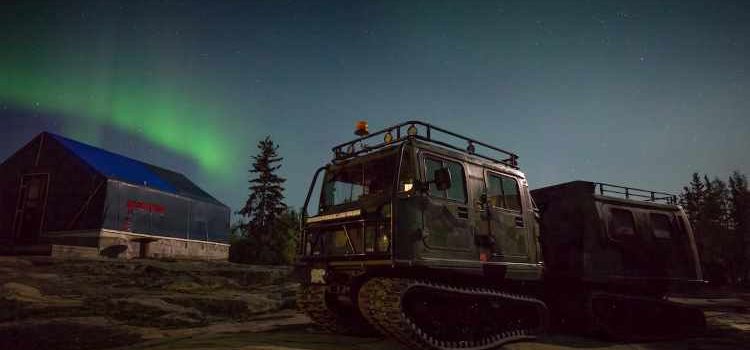All Canadians are bombarded with the narrative that there are 3 coasts to our country. This article is about wildlife, nature, and landscape photography in Northwest Territories. More specifically, we are talking about the city of Yellowknife.
Yellowknife, the capital of Canada’s Northwest Territories, is a nature photographer’s paradise. The city is located in the heart of the boreal forest and is surrounded by pristine lakes, rivers, and forests. The area is home to a wide variety of wildlife, including moose, caribou, wolves, and bears.
With its stunning landscapes and diverse wildlife, Yellowknife offers endless opportunities for photographers of all skill levels. Whether you’re a professional photographer or an amateur, this guide will help you plan your next wildlife photography adventure in Yellowknife.
Table of Contents
- The Best Time to Visit
- Equipment and Settings
- Popular Wildlife to Photograph
- Recommended Locations
- Ethical Considerations
- Conclusion
The Best Time to Visit
The best time to visit Yellowknife for wildlife photography is during the summer months of June, July, and August. During these months, the boreal forest is in full bloom, and the wildlife is most active. The long days also provide ample daylight for photography.
Additionally, the summer months are when many migratory birds pass through the area, providing opportunities to photograph a wide variety of avian species. However, it’s worth noting that the summer also brings more visitors to the area and higher temperatures, which can make it harder to find secluded spots and can have an impact on wildlife behaviour.
Winter can also be a great time to visit for photography, as the snow-covered landscapes provide a unique and striking backdrop. The wildlife is also more concentrated around food sources, making it easier to spot and photograph.
Equipment and Settings
For wildlife photography in Yellowknife, you’ll want to bring a camera with a long lens. A telephoto lens with a focal length of at least 300mm is recommended. A fast shutter speed is also essential for capturing sharp images of fast-moving animals. A tripod or a monopod is also a good idea, as it will help you keep your camera steady and prevent camera shake.
In terms of camera settings, it’s best to use a fast shutter speed (1/1000th of a second or faster) and a low aperture (f/5.6 or lower). This will help you achieve a shallow depth of field, which will help to separate your subject from the background and make it stand out. It’s also important to set your ISO to a low value to minimize noise in your images.
Popular Wildlife to Photograph
Yellowknife is home to a wide variety of wildlife, and there is something for every photographer to enjoy. Some of the most popular animals to photograph in the area include:
- Moose: These large mammals are commonly found in the boreal forest and can often be seen grazing near lakes and rivers.
- Caribou: The barren-ground caribou herd is one of the largest in the world, and can be found in the region. They can be challenging to photograph, but the rewards are well worth the effort.
- Wolves: These elusive predators are often heard, but rarely seen. However, with patience and a bit of luck, you may be able to spot and photograph a pack of wolves in their natural habitat.
- Bears: Black bears and Grizzly bears are also commonly found in the region. While they can be dangerous, they are also fascinating animals to photograph. It’s important to keep a safe distance and to be aware of your surroundings at all times.
- Birds: Yellowknife is a birdwatcher’s paradise, with over 250 species of birds that can be found in the region. Some of the most popular birds to photograph include the Bald Eagle, the Peregrine Falcon, and the Common Loon.
Recommended Locations
Yellowknife is home to many beautiful and diverse locations that are perfect for wildlife photography. Some of the most recommended locations include:
- The Yellowknife River: This river runs through the heart of the city and is home to a wide variety of wildlife, including moose, caribou, and birds. The river is also surrounded by beautiful boreal forest, making it a great location for landscape photography.
- The Ingraham Trail: This scenic trail runs around the edge of Great Slave Lake and offers stunning views of the lake and the surrounding landscape. It’s a great place to spot caribou, moose, and bears, and is also a popular spot for birdwatching.
- The Tibbett to Contwoyto Winter Road: This winter road is only open for a few weeks each year, but it offers an unparalleled opportunity to photograph the region’s wildlife in a unique and beautiful setting. It’s a great place to spot wolves and caribou, and the snow-covered landscapes are truly breathtaking.
Ethical Considerations
When photographing wildlife in Yellowknife, it’s important to remember that these animals are wild and should be treated with respect. It’s essential to keep a safe distance from the animals and never approach them too closely.
It’s also important to be aware of your surroundings and to watch for signs of danger, such as bears or other dangerous animals. Additionally, it’s essential to follow all local laws and regulations regarding wildlife photography, including obtaining any necessary permits.
Conclusion
Yellowknife is a nature photographer’s paradise, offering endless opportunities for capturing stunning images of the region’s diverse wildlife. With its beautiful landscapes and abundant wildlife, this region is perfect for photographers of all skill levels.
By following the tips and recommendations outlined in this guide, you can plan a successful and enjoyable wildlife photography adventure in Yellowknife. Remember to be respectful of the wildlife, keep a safe distance, and follow all local laws and regulations to ensure a successful and ethical trip. Happy shooting!

